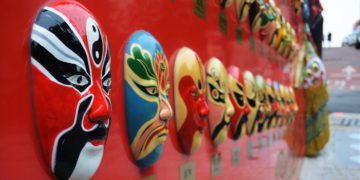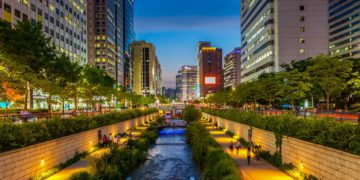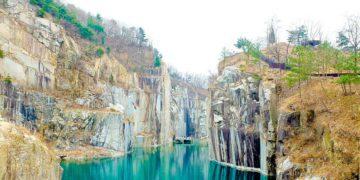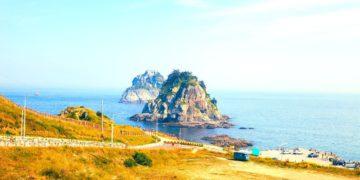If you’ve ever needed a pause and you crave something more reflective than a palace or more personal than a monument in your trip to Seoul, then Seosomun Shrine History Museum might be the place you didn’t know you were looking for. Just steps from Seoul Station, it offers a quiet space to look inward and connect with Korea’s deeper, often overlooked stories.
Join us as we unravel how this breathtaking museum is more than just your ordinary religious travel destination. As you read through our guide, you will eventually understand that this place actually speaks more to you, inviting those who have ever felt silenced to reflect on their past and see that there’s still a brighter future waiting at the end of the underground path—literally.
Seosomun Shrine History Museum: A Sacred Space in the Heart of Seoul
You wouldn’t expect to find a place of martyrdom so close to the rush of Seoul Station—but just 15 to 20 minutes west, the noise fades. The skyline gives way to a quiet park, where spring blossoms and red-brick paths soften the city’s sharp edges, leading you into a space that feels entirely different from the world you just left.
Welcome to Seosomun History Park in Seoul, home to one of Korea’s most powerful hidden landmarks: the Seosomun Shrine History Museum.
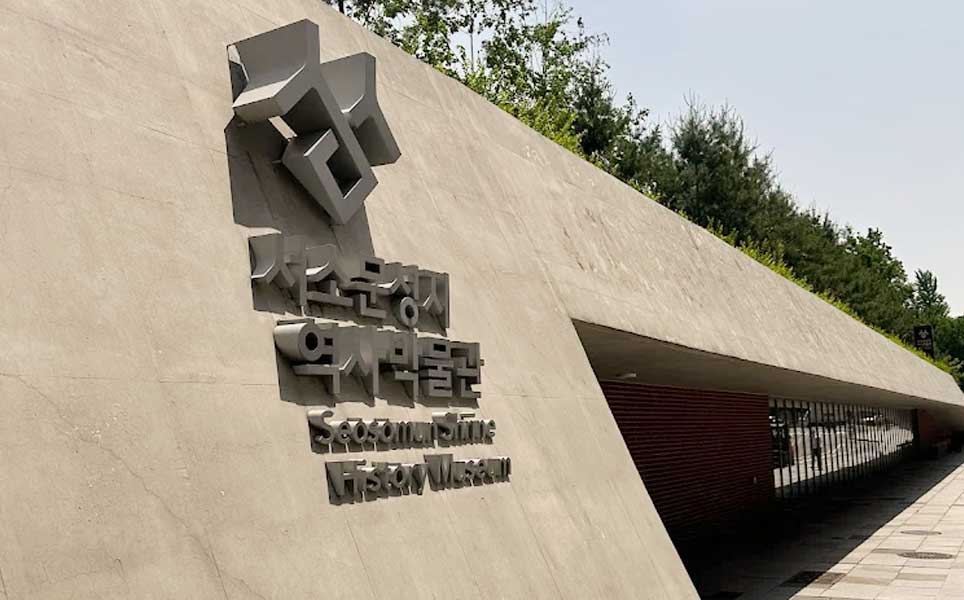
Once a Joseon-era execution ground, this unassuming corner of Seoul now tells stories of courage, faith, and humanity—through architecture, light, and silence more than through words. It’s a place of remembrance, but also of healing.
What Is Seosomun and Why Does It Matter?
Seosomun means “small west gate,” and historically, this spot was a bustling artery into the old capital of Hanyang (now Seoul). As Jeong Yak Yong, one of Korea’s greatest reformers, once described: this was where carts rattled, shoulders bumped, and grain overflowed. It was lively, practical—and for that very reason, it became a place of public executions.
During the 19th-century Catholic persecutions, hundreds of believers were executed here—accused not of violence or rebellion, but of believing in a foreign faith that dared to place divine authority above the king. Their quiet resistance, rooted in spiritual conviction, shook the rigid Confucian hierarchy that ruled the Joseon Dynasty.
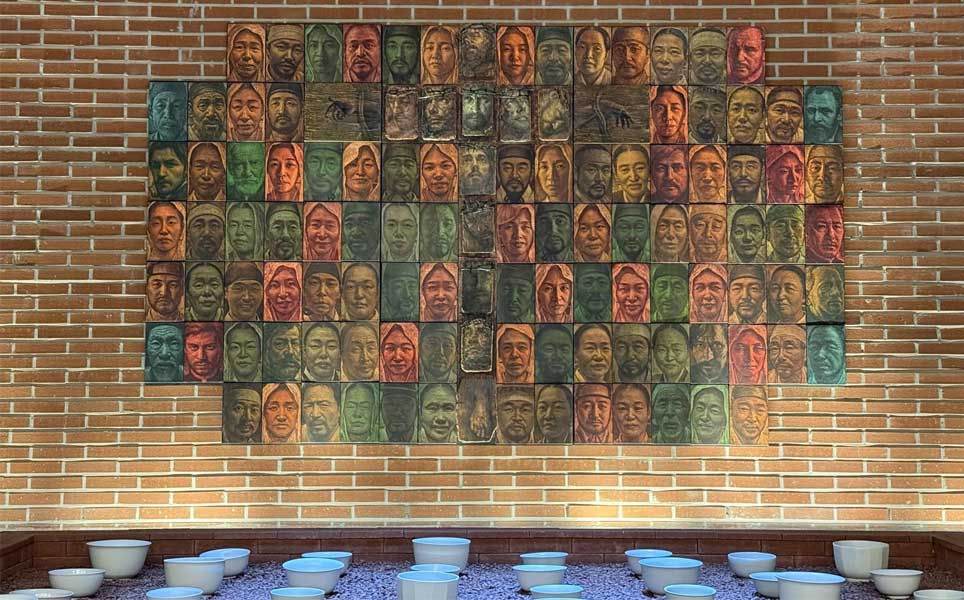
Beyond what some believe to be a simple Catholic travel destination; this place actually tells you more. Because in this place, you will witness stories about how ordinary people had bravely challenged injustice with faith.
Inside Seosomun Shrine History Museum: What You’ll See and Feel
Don’t expect those flashy stained glass or gold-gilded relics in the Seosomun Shrine History Museum. Instead, you will find something far more stirring: a carefully designed underground sanctuary where the architecture itself tells the story.
You begin by walking down a curved trail framed by red-brick walls. And this descent is actually intentional; it’s meant to pull you gently away from the noise of the city and into a place of reflection.
Here’s what to explore inside:
Consolation Hall
As you step into Consolation Hall, the noise of the world fades behind you. The walls—deep red brick, curved and bare—don’t shout for your attention. They whisper. There are no grand exhibits here, no distractions. Just space, shadow, and a single beam of light falling from the ceiling like a quiet prayer.
A single beam of light pours in from the ceiling, illuminating the otherwise somber red-brick interior. These lights honor five saints executed here—and, more universally, anyone who has suffered injustice in silence. And yet, it also reaches further, speaking to anyone who has ever been silenced, overlooked, or forgotten.
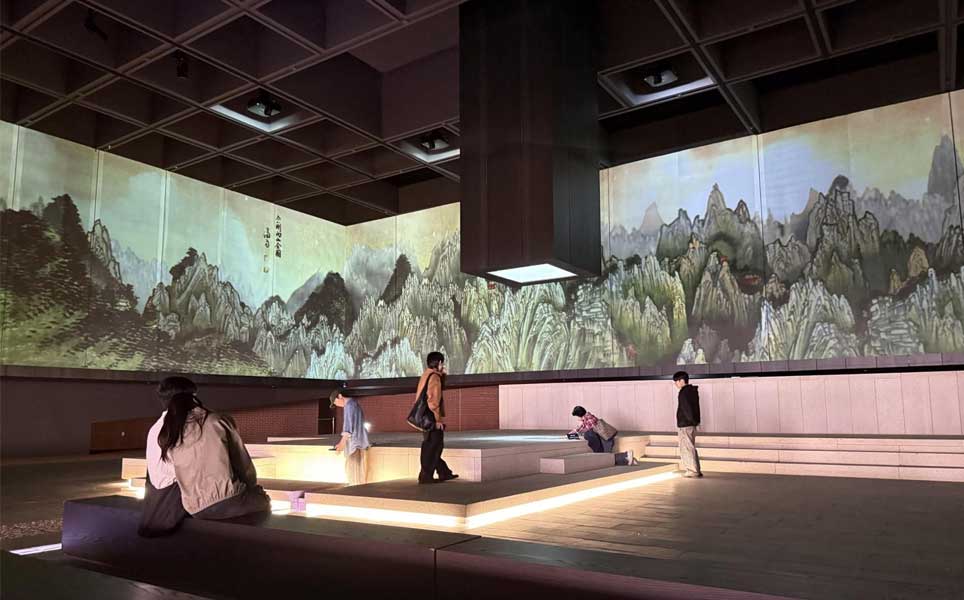
You don’t need to believe in anything to feel something in this room. You only need to stand still long enough. The air feels thick with memory, and in its stillness, you may find yourself reflecting on things you hadn’t planned to.
Sky Square
Beyond the hall lies Sky Square: a tall, open-air void surrounded by brick, open to the sky. There are no statues, no fountains here—just space. It’s quiet, just a little bit haunting, and oddly comforting. This is just the kind of place where your thoughts echo back at you.
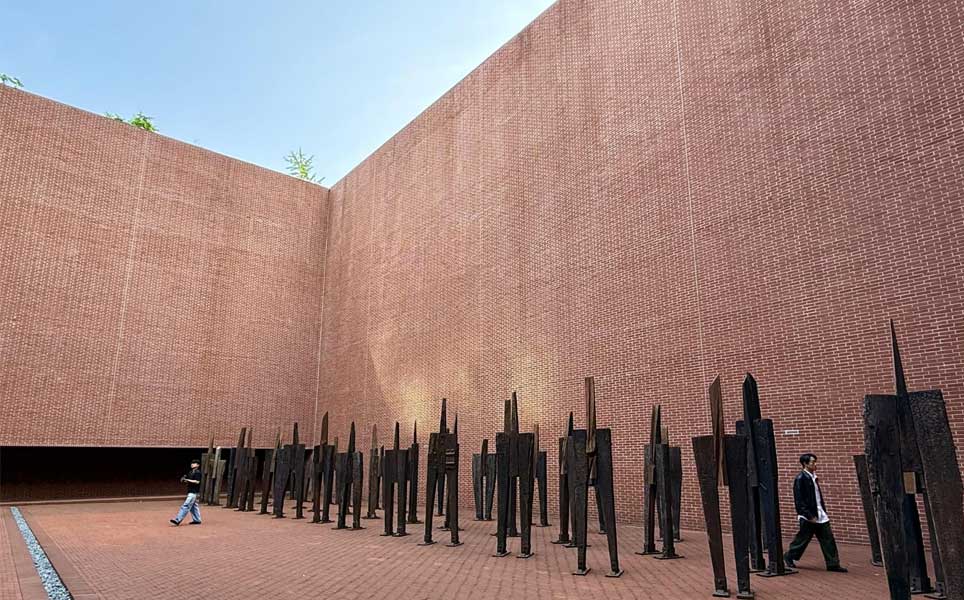
Art, Faith, and More Than Catholicism
Although rooted in Catholic history, this museum doesn’t exclude. Recent exhibits have featured Buddhist art, works by artists with autism, and cultural installations honoring peasant revolutionaries. It’s a space of inclusive healing, not religious separation.
Lastly, but most importantly, don’t you ever miss Jang Jun-ho’s “Pieta” sculpture in the Saint Chong Ha-sang Chapel. You will see the stunning art carved from a ginkgo tree of Mother Mary in traditional hanbok holding her son. It is where the classic heartbreaking scene of the past meets the contemporary touch of art, making it surprisingly breathtaking and absolutely Korean.
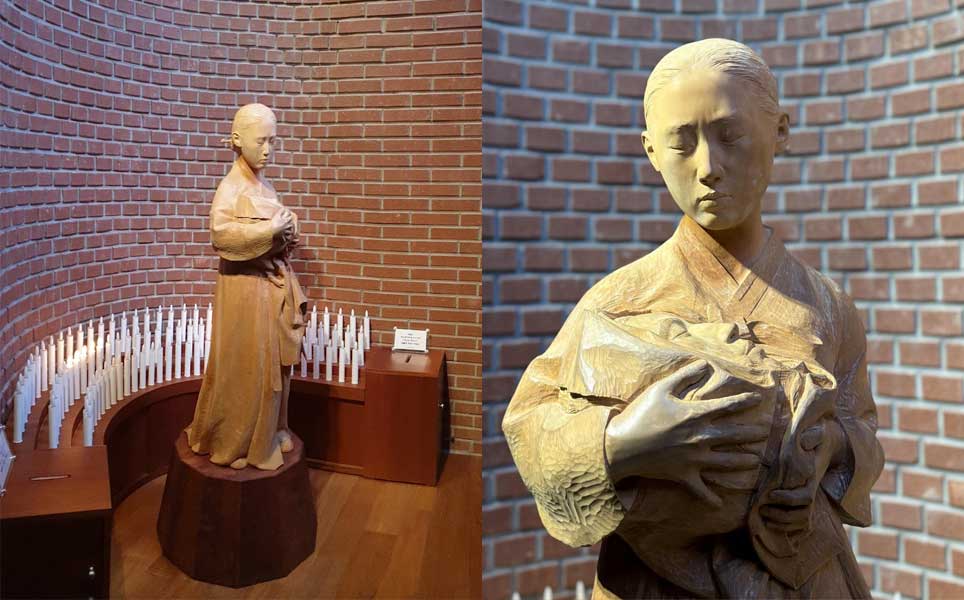
Why You Should Visit During Your Seoul Trip: It’s Not Just About Religion
Many travelers skip historical religious sites because they assume they’re only for believers. But Seosomun isn’t that kind of place. You don’t visit because you’re religious. You visit because you’re human.
You come here if you’ve ever carried something heavy and quiet. And you come here as well if you’re seeking stillness, clarity, or simply a deeper connection to the soul of the city.
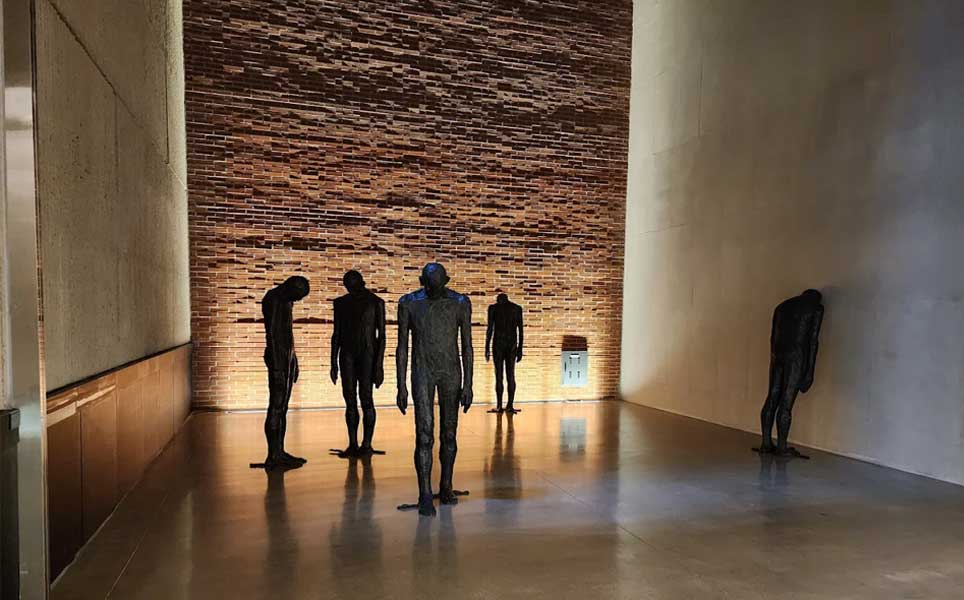
In a landscape filled with temples, palaces, and high-rises, this museum feels different. Where other sites impress with grandeur, Seosomun speaks in a lower register, through grief, courage, and the quiet dignity of remembrance. It’s Seoul’s emotional core, hidden in plain sight.
When and How to Visit
Location
- Address: 5 Seosomun-ro 23-gil, Jung-gu, Seoul
- Phone: +82 2 3147 2401
- Website: Seosomun.org
Getting There
Take Seoul Subway Line 1 or 4 to Seoul Station, then walk 15 to 20 minutes west through Seosomun History Park. Follow the signs to the underground entrance.
Opening Hours
- Tuesday–Sunday: 9 AM – 6 PM
- Closed on Mondays and major holidays
Admission
- Free of charge
- Some special exhibitions may require separate tickets
Languages
Exhibit labels are in Korean and English. The atmosphere, however, transcends language.
Travel Tips for Visiting
Best Time to Visit
Spring is by far the best time to go. The cherry blossoms around Seosomun History Park add a gentle, almost poetic contrast to the solemnity of the museum. Try to arrive in the late morning if you prefer a quieter atmosphere with fewer crowds.
What to Wear
Dress modestly and comfortably. While the museum isn’t a place of worship in the traditional sense, it’s still a space that invites reflection, so respectful attire feels appropriate.
Photography
You’re welcome to take photos, but do it quietly and with intention. The museum’s stillness is part of its power, so be mindful of others who are there to reflect or remember.
Facilities & Accessibility
The entire facility is underground but fully accessible. Elevators and smooth walkways make it suitable for wheelchair users or anyone needing assistance. You’ll also find clean restrooms, a peaceful reading area, and a small bookstore at the entrance—perfect for a short pause after your visit.
Duration
Plan to spend about an hour to ninety minutes here. That’s enough to take it all in without rushing, leaving space for both discovery and reflection.
What’s Nearby: Extend Your Cultural Walk in Seoul Beyond Seosomun Shrine History Museum
What’s more, one of the best parts about visiting Seosomun Shrine History Museum is its location—you’re right in the middle of Seoul, with some of the city’s most rewarding cultural stops just a few steps away. So don’t rush off. Once you’ve taken in the quiet reflection of the museum, you can keep the momentum going in your own way.
Seoul Museum of Art (SeMA)
Start with the Seoul Museum of Art (SeMA), one of Seoul’s fascinating museums, just a five-minute walk away. Housed in a beautiful stone building, it blends contemporary Korean creativity with thoughtful exhibitions. If the museum opened your heart, this one will spark your imagination.
Deoksugung Palace
Next, swing by Deoksugung Palace. Its elegant stone walls and tree-lined paths create the perfect visual contrast to Seosomun’s red brick solemnity. Time your visit to catch the changing-of-the-guard ceremony—it’s a colorful glimpse into royal tradition.
Jeongdong Observatory Café
Need a pause? The Jeongdong Observatory Café is hidden in plain sight and offers a quiet seat with a panoramic view over Deoksugung’s rooftops. It’s one of those serene Seoul moments that rarely make the guidebooks.
Namdaemun Market
If you’re craving something livelier, Namdaemun Market is close enough for a snack run—or a full sensory reset. It’s bustling, gritty, and absolutely worth diving into for tteokbokki or a souvenir hunt.
Seoullo 7017 Sky Garden
And to finish it all off, take a sunset stroll along Seoullo 7017, Seoul’s answer to the High Line in New York. Elevated above traffic and lined with greenery, it gives you a fresh view of the city you’ve just gotten to know on a deeper level.
Seosomun Shrine History Museum: A Quiet Place for Travelers Who Want to Feel
Finally, while Seoul Forest immerses you in nature and Gyeongbokgung Palace surrounds you with royal grandeur, Seosomun Shrine History Museum invites you into something far more personal—humanity itself.
Therefore, once you finish your trip, you will leave not just learning more about Korea’s Catholic martyrs, but perhaps understanding more about your own strength, your own grief, your own hope.
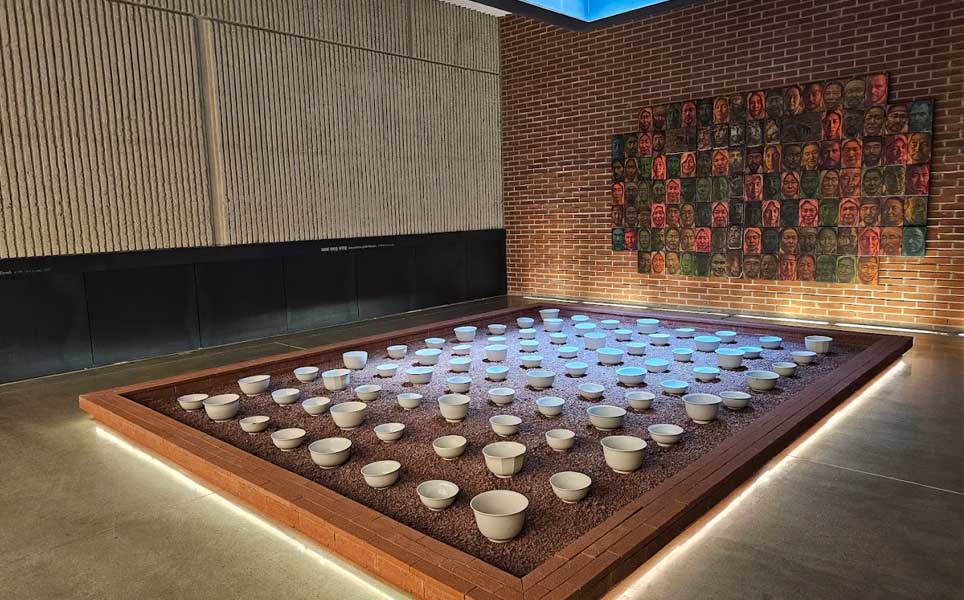
So, even if your Seoul itinerary is already packed, please be sure to make room for Seosomun Shrine History. It’s where silence holds memory, and where light cuts through stone to tell stories that words alone can’t.
And believe us, once you leave, you will no longer be the same.
Related Posts
2,243 total views, 6 views today


